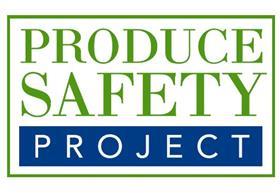
A number of major supply countries of fresh fruit and vegetables to the US have modernised their food-safety laws and regulations over the past two decades to emphasise preventive measures, according to new report released by the Produce Safety Project (PSP) at Georgetown University in the US.
The report, “Legal and Regulatory Frameworks Governing the Growing, Packing and Handling of Fresh Produce in Countries Exporting to the US,” presents a series of case studies examining five of the top 10 US produce trade partners – Canada, Chile, China, Mexico and Peru.
The 175-page report was written by Monachus Consulting, an international agricultural industry consulting firm based in Canada.
“This report is particularly timely, as Congress considers food-safety reform legislation that includes provisions geared toward improving the safety of produce and imports in general,” said Jim O’Hara, director of the Produce Safety Project, in a press release.
“While the US is considering whether to adopt food-safety rules for produce, many of our trading partners already have produce laws and regulations on the books that are intended to prevent contamination at the source – long before they reach the American consumer,” Mr O’Hara added.
Over the last two decades, imports of fresh produce have grown substantially in the US with other countries supplying US consumers with billions of dollars of fresh fruits and vegetables each year, according to the report.
For the five countries analysed, this report details:
• Types and quantity of produce exports to the US;
• National food-safety systems (e.g. legislation, competent authorities, etc.);
• Domestic food-safety regulatory requirements for fresh produce production, packing and handling;
• Export requirements for fresh produce production, packing and handling (if different from the domestic requirements); and,
• The role and scope of any significant private sector food-safety standards for fresh fruits and vegetables exports.
“In the early 1990s, many foreign governments responded to the series of food contamination incidents with the ‘first wave’ of new legislative and regulatory requirements,” explained Albert F. Chambers, the report’s author.
Over the last decade, in addition to implementing legal reforms related to food-safety matters, many US trade partners have also reorganised how food-safety policies and regulations are set.”
The study indicates that reform of food-safety oversight for countries exporting to the US will continue to evolve.
For example, Mexico, Peru and China have indicated that more regulations will be implemented in the coming years, and Canada and Chile indicated additional legislative measures are currently in process.



